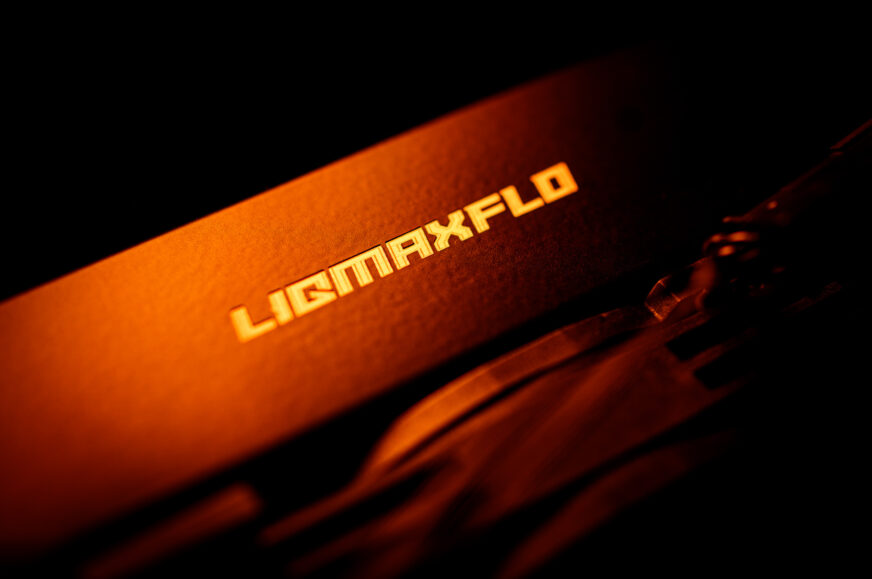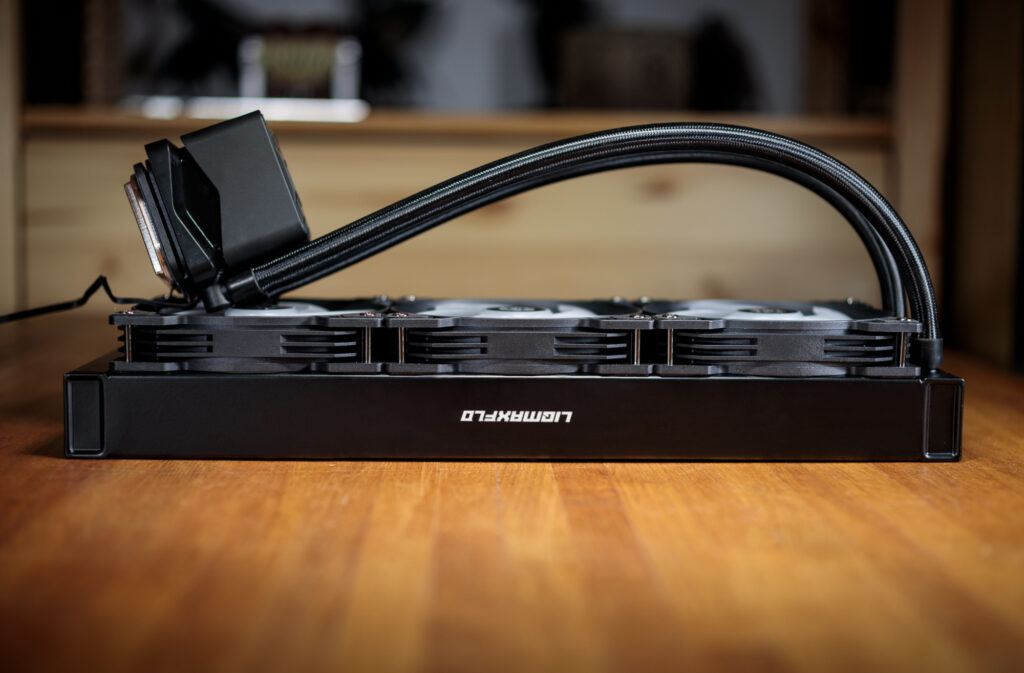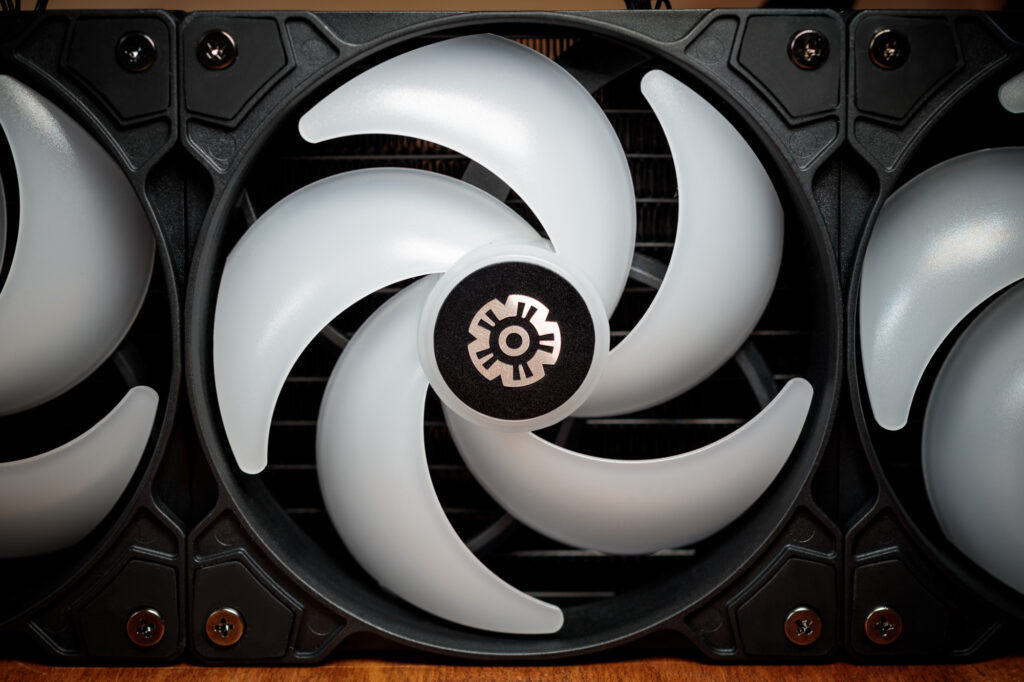Enermax Liqmaxflo (SR)
Radiators on the vast majority of AIO coolers are very similar and… relatively thin compared to what the new Liqmaxflo models from Enermax come with. Additionally, on the 40% thicker than normal radiators, there are fans that are known to achieve high static pressure. And when you factor in the fact that these are still affordable solutions by liquid cooler standards, it’s a good idea to take a closer look at this offering.
The new Liqmaxflo lineup of liquid coolers is made up of six models, half of which have radiators as thick as 38 mm. Compared to the “SR” variants, they also have ARGB fans. However, the Liqmaxflo SRs are cheaper and have better compatibility with cases. The extra-thick AIO coolers already clash with the motherboard in many cases. Nevertheless, they will interest us more this time. After all, this is something rare and unconventional. While this is not an isolated concept and 38 mm thick radiators are also found in the Phanteks Glacier One 240 T30 (V2) for example, the Enermax Liqmaxflo is significantly cheaper with the same radiator format.
And there’s even a 420 mm variant with four fans on the radiator. That’s already not only a thick, but also a really long cooler. But we’ll be looking at the more widespread 360-millimeter format with better support with cases. First in the form of a few details and later in tests. The Liqmaxflo 360 has been in our editorial office for some time now, and until we have the thermal results, you can at least take a look at the key design elements.
The first is the extra-thick radiator. In profile it has as much as 38 mm instead of the usual 27 mm. And it seems that more thickness does not mean thinner finning, as is often the case with separate radiators for custom loops. FPI will probably be around 22. The technical documentation does not provide this information (but will be measured in the review. Before going on vacation, for the purposes of this article, my colleague Pavel forgot about it). But we do know that the fins are aluminum and the block is copper. This means that the lifetime of the whole loop will depend on the additive in the fluid to retard galvanic corrosion. Given that these are not super-expensive radiators, using a cheaper material is natural.
The fans for cooling the radiator geometrically resemble the Arctic P12 with the difference that they do not have such sharp blade tips and their material composition is obviously different. This is with a view to the rotor conducting light through itself well, as these are ARGB fans. Enermax fans are likely to feature high static pressure, as is the case with the Arctic P12, with exceedingly little airflow drop due to the radiator. It’s possible that Enermax fans will also copy the Arctic P12 acoustically, and you won’t be able to avoid tonal peaks at critical speeds. But they may be different, milder but also more pronounced, as the material is different. You’ll find out exactly how this is in the tests, which won’t lack the traditional frequency analysis of the sound.
All Enermax Liqmaxflo (SR) coolers have a 60 mm fan on the block to accelerate airflow around the motherboard VRM. The CPU block is striking, but also for the pump that it hides. In connection with it, Enermax mentions a patented design (Shunt Channel) that shortens the path of the flowing liquid to provide faster heat transfer.
Supported Intel platforms are LGA 1700, 1200, 115x, 2066, 2011 and LGA 1366 and from AMD it’s AM5 and AM4.
The Liqmaxflo models (240/360/420) start at 110 EUR (for the 240 mm one with a 380 W TDP) and the Liqmaxflo SR models (120/240/360) start at 70 EUR for the smallest 120 mm variant. On the other hand, you shouldn’t pay more than 160 EUR for the huge Liqmaxflo 420 with a TDP of up to 420 W.
English translation and edit by Jozef Dudáš
- Contents
- Enermax Liqmaxflo (SR)
















About time we see more 5-bladed designs from someone not named Arctic. These fans look similar to the P12 at first glance but the curvature is definitely different on closer inspection. Really curious how they’d perform.
You are right, there will be more differences from the Arctic P12. Hopefully (if Enermax will sell these fans separately) there will be room for a comparison between them.
PS: I’m still waiting for 5 big blades of really thick LCP. 🙂